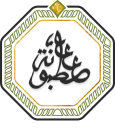In the past, we use to use the term “personnel management”. In the 1980s, the term human resources management emerged followed in the 1990s by the term human capital. Yes, these terms differ, and even overlap with many other sciences, but all of these terms concentrate on the human aspect. The first term focused on basic applications such as salaries, allowances, vacations, etc. The second term is a clear expression of human needs and the requirement for a highly skilled workforce. In this type of management, the experts distinguish between two general theories of solid management of human resources (Hard HR Management), and flexible management of human resources (Soft HR Management). The following table illustrates the most significant differences between these two approaches:
[supsystic-tables id=2]
Source: Adopted from Wikinson, A. and Johnstone, S. (2016) “Encyclopedia of Human Resource Management”, Glos: Edward Elgar Publishing.
Today, the concept of human resource management has been developed intellectually and people management has entered an era of human capital. This new concept exceeded both hard and soft human resources, where human resources are considered as a capital. Nowadays, developed countries strive for having a pool of creative talent to draw from, in order to enhance sustainable development and stabilize a prosperous economy. It is worth mentioning that in the public service sector in many developing countries applications tend towards to the hard model of managing people. This is then reflected in the decline in productivity, the spread of bureaucracy, etc., the negative impact of these results on the gross national product of these countries, and thus the failure of governments in their development strategies, In addition the need of reform in this sector is long overdue. (World Development Report, 2017)
Many global indicators confirm that public sector organizations face significant challenges in managing people, especially with the transformations adopted by governments today, such as e-government, e-governance, participatory government, adoption of social networking applications in the workplace, and others. Thus, the concepts of integrity, transparency, equal opportunity, demographic changes, diversity management, etc. have become pillars of current human capital management strategies in government organizations. These government policies go beyond the tangible human benefits of financial, administrative and organizational management to intangibles, such as human intellectual management, organizational behavior, reputation management; therefore, it is important to consider that human capital is the primary source of sustainable competitive advantage rather than financial assets or means of production. (Human Capital Index, 2017)
The Service Innovation Center in the United States presents four key areas for organizations to pursue the concept of human capital management: Center for Innovation in Public Service 2006, p. 4.
- Recognize and manage employees as critical assets;
- Strategically plan and manage staffing;
- Prioritize/plan human capital costs for sustained investment; and
- Openly engage employees via communication and collaboration channels.
Some Work References
Center for Innovation in Public Service (2006) “Strategic framework for implementation of human capital management in federal government”. Retrieved from http://www.bearingpoint.com/Documents/StaticFiles/c3703cipshcm.pdf.
Mourino-Ruiz, E. (2017) “The Perfect Human Capital Storm: Workplace Human Capital Challenges and opportunities in the 21st Century”, North Carolina: Information Age Publishing, Inc.
Selon, S. (2009) “Human Capital: Tools and Strategies for the Public Sector”, Washington: CQ press.
Wikinson, A. and Johnstone, S. (2016) “Encyclopedia of Human Resource Management”, Glos: Edward Elgar Publishing.
World Economic Forum (2017) “The Global Human Report”. Retrieved from http://www.weforum.org/reports/the-global-human-capital-report-2017
